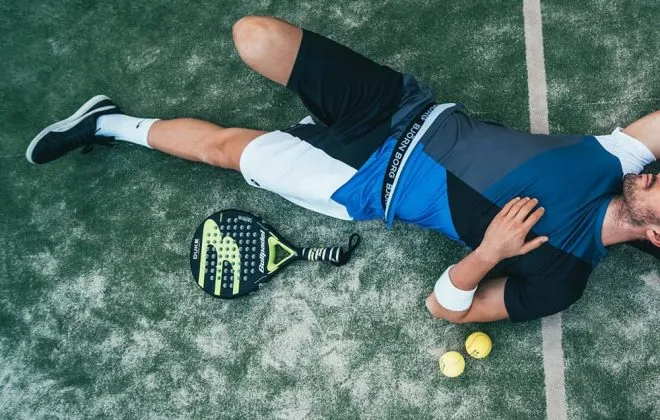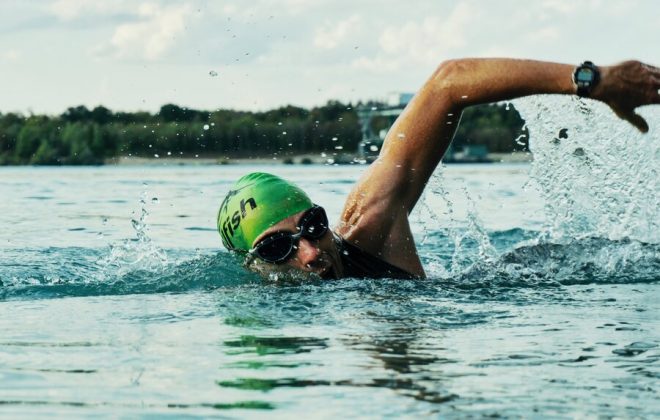How Cold Water Therapy Makes Me Feel Alive & Deeply Connected
I’ve always found cold water painful to be in. I felt muscle spasms, cramp and unstoppable shivering after only a few minutes of exposure. So, I was a little hesitant when a good friend invited me to join him and a few others for some cold water therapy (a dip in the English sea in April 2018). After a hard winter the water at that time was at its coldest.
At around the same time, as a health and fitness professional, I was aware (as an interested spectator) of the growing cold water movement and its apparent benefits being promoted by the likes of Wim Hof and other leaders in this space.
So, despite my reservations, I said yes to my friend on a cold, stoney beach in Brighton. We huddled together and James began to explain the do’s and don’t, the how and the why and the importance of mindset and breath. At that point it became clear that there was more to this process than just stripping down to your boxers and running into the sea screaming like a wild beast.
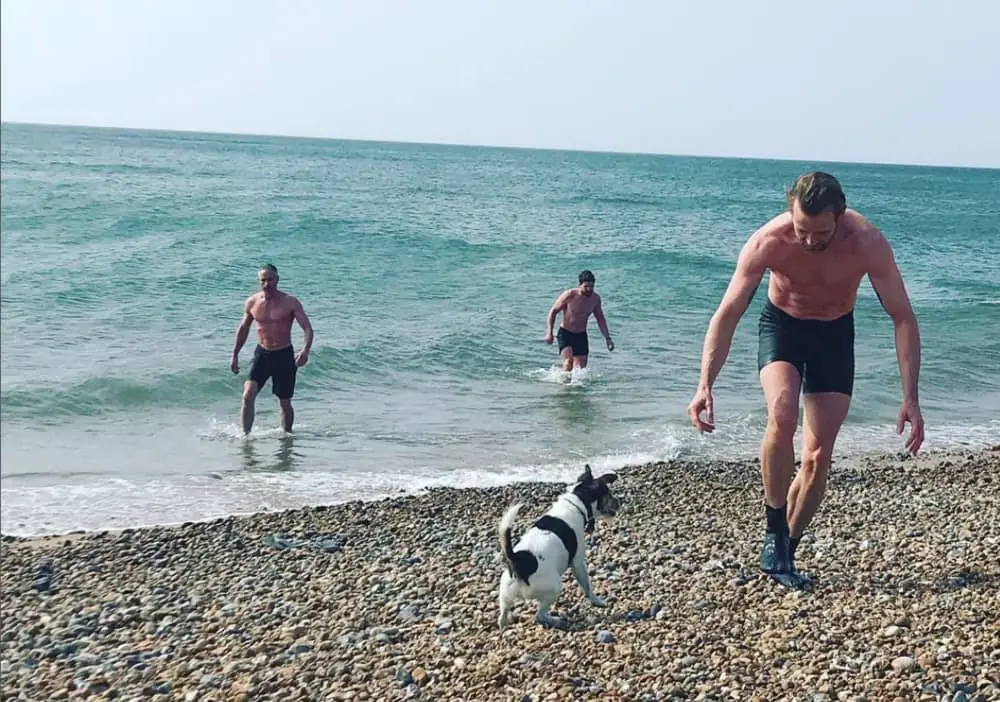
I learned that when done right, cold water therapy can feel like a ceremonial right of passage in which you can clear your mind, strengthen your mindset and harness breathwork to control the response of your autonomic nervous system.
I came out of that first dip (of many), with a primal sense of aliveness, a sense of accomplishment, an important feeling that my relationship with cold water had been rewired slightly, and a strong bond of friendship with those around me.
Read also: How To Develop Unshakable Confidence Through Emotional Resilience
Benefits of cold water therapy
Cold exposure therapy, also known as cryotherapy, is a process where your body is exposed to cold for a short period of time. This can be done in various ways using ice baths or simply cold showers. Cold exposure is a powerful way to reduce inflammation, improve circulation, and reduce muscle soreness. It’s also been shown to boost immunity, improve cognitive function and reduce body fat.
Physical benefits of cold water therapy
Cold exposure boosts immune system
Most people think of cold water therapy as a way to relieve pain or reduce inflammation. But did you know that it can also boost your immune system? By exposing yourself to cold, you can increase your body’s production of white blood cells that fight off infections. One study even found that, using cold therapy, people had a lower risk of developing upper respiratory tract infections.
Cold exposure improves blood circulation
Exposing the body to cold temperatures forces blood vessels to constrict to preserve heat. But once the body gets used to the cold, vessels will dilate back to improve blood flow. This process is known as vasodilation. Cold therapy can help to improve blood circulation by causing vasodilation.
Cold exposure reduces inflammation and pain
Research has shown that cold therapy can effectively treat conditions such as arthritis, tendinitis, and various others.
Cold exposure increases libido
Most people don’t think of cold therapy as a way to improve their libido, but it can be pretty effective. Cold therapy has been shown to massively increase testosterone levels. Testosterone is the hormone responsible for libido in both men and women. If you’re looking to increase your libido try adding some cold therapy to your health routine. Results might surprise you.
Cold exposure burns calories
Cold water therapy is excellent for increasing your metabolism. When your body is exposed to cold temperatures, it must work harder to maintain its core temperature. This process requires energy and thus burns calories. Studies have shown that cold therapy can boost your metabolism up by 20%, meaning you’ll burn more calories even when you’re at rest.

The Resilient Athlete
A Self-Coaching Guide to Next Level Performance in Sports & Life
Are you aiming to become a resilient athlete who is able to withstand any pressure? Be able to jump on any opportunity? Take any challenge life throws at you head on?
Then this book is for you.
Learn moreMental benefits of cold water therapy
Cold exposure gives you a natural high
When we expose our body to cold temperatures, it goes into survival mode and starts to make adjustments to maintain a normal body temperature. One of the ways it does this is by releasing endorphins from the brain and producing a feeling of euphoria. This “natural high” can help to improve your mood and also increase your pain tolerance.
Cold exposure reduces stress
When we expose our body to cold temperatures, it also responds by releasing norepinephrine into the bloodstream. Norepinephrine is both a neurotransmitter and a hormone, and it has a crucial role in reducing stress and anxiety.
Read also: Burnout In Sports – 20 Ways To Detect, Overcome & Prevent It
Cold exposure provides positive reinforcement
Successfully completing a personal challenge like cold water exposure can create a positive reinforcement loop helping you feel mentally more capable of completing hard / challenging tasks. This often leads to you feeling better about yourself and becoming more likely to successfully tackle other challenges in life too.
Cold exposure is a great way of socialising and making new friends
Cold water swimmers have a great sense of community and camaraderie. There is nothing that brings people together like facing a challenge and sharing the experience as a group.
There are ongoing studies into the effects of cold-water swimming and the menopause. The difficulty is that it is difficult to prove that it is specifically the cold water that is having the positive effect – as the aspects of socialising and doing exercise will both improve general health and wellbeing. What’s not to like?
How to start cold water therapy and build up the practice
Before you invest in a barrel for your garden, or pack up and move to the seaside, or invest in all the sea swimming paraphernalia, I would recommend starting off with free and easy-to-do small doses of cold water to see how you get on with it and how it makes you feel.
Step #1 – cold shower
The easiest way to get started is to end your normal shower by turning the temp down gradually, taking time to acclimatise to slightly colder temperatures on the way down to fully cold. Start with 15 seconds and build up week by week to 3 minutes of cold water. Focus on remaining calm and breathing slowly in and out through your nose. Another tip is to hold the shower head in your hand and slowly expose your feet and legs to the cold water first, then work up your body until the shower head is above head height so you can get your head under it.
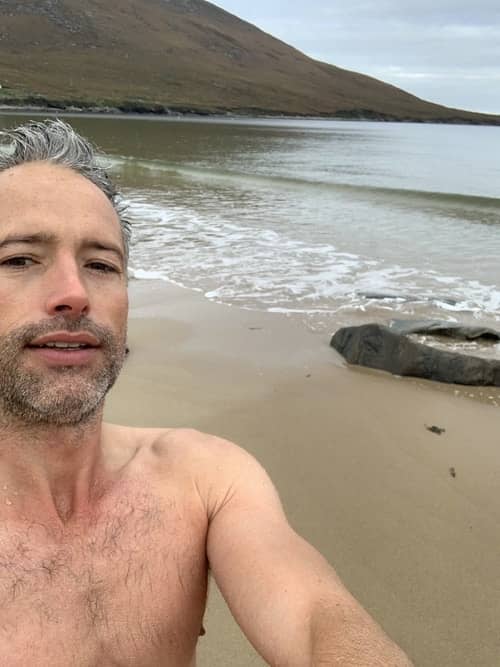

Step #2 – cold bath
After showers, the next logical step is to fill a bath with cold water from the tap and submerge as much of your body in it as possible. Get in and out slowly, pausing to allow your body to adapt to the water temperature as your feet and legs get it, then when it is up to your waist, and again when it is covering your shoulders. As with the shower, focus on staying calm, breathing slowly and deeply. Build up from one to three minutes of time in the cold bath.
Step #3 – ice bath
The temperature of the cold water coming out of your tap can vary a lot depending on where you live and the time of year. In some places and seasons, it may be necessary to use ice in the bath to lower the water temperature. As you adapt to cold baths, it is also a good idea to use ice to make the water a little colder than you’re used to.
At this stage in your cold water journey it can be useful to invest in a water thermometer. So that you know exactly the temperature of the water you are getting into and experiment with the quantity of ice required to get the water to your desired temperature.
Step #4 – fresh water swimming
So far all the methods have purposely been in the safe environment of your own home. It’s also super convenient and makes it easier to establish cold water exposure as a regular habit. If you like the idea of taking this newly embedded habit out into nature, we would recommend you start in calm, fresh water that is safe to swim in. Not tidal and in an environment where other people are present, in case of emergency. This is where the power of cold water in a group setting comes into its own.
Read also: 5 Strategies How Athletes Can Use External Accountability For Motivation
Step #5 – sea swimming
If you feel confident with fresh water, you may want to try sea swimming. But do make sure you know the local conditions such as swell height, wind direction, tides, currents and weather conditions to make sure it is safe to do so. And that there are other people with you. Take plenty of warm clothing, hats and gloves to put on afterwards. And don’t forget a flask of warm tea to sip as you thaw out.
Breathwork during cold water therapy
While we often refer to the importance of focusing on your breathing during cold water therapy, we do not recommend you try any breathing techniques that can cause light headedness and sometimes fainting. These techniques often include a forced breathing pattern of inhale and exhale as well as breath holds. Avoid that whilst in water (no matter its temperature) because there is a risk of loosing consciousness and slipping under the water.
We would suggest focusing on breathing in and out through your nose, trying to lengthen your exhale. This will help you to stay calm whilst you acclimatise to the cold water.
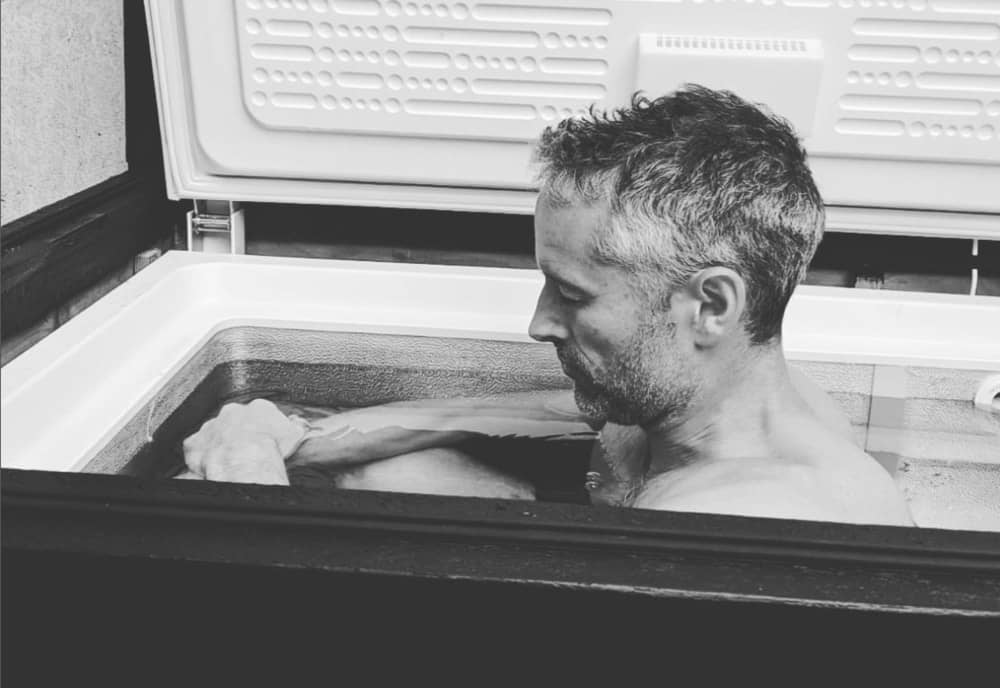
How long should you expose yourself to cold water?
This is a very individual question that depends on your tolerance, body fat percentage and a multitude of other factors. But as a general rule of thumb we suggest no more than one minute of cold water exposure per degree Celsius of water temp (above zero). E.g. 4 degrees = max of 4 minutes exposure. The maximums should be a target to build up to slowly. Don’t expect to tolerate 4 minutes at 4 degrees on your first time trying cold water.
Cold water therapy – conclusions
In today’s modern world, we spend majority of our day in a climate controlled environment. So, in a way, we have lost touch with our body’s ability to adapt to harsh conditions. Tapping back into these innate powers within ourselves can have huge positive implications for our physical and mental wellbeing.
That being said, everyone’s relationship to cold water is individual. And the journey of cold water therapy and immersion is a very personal one. One which I would whole-heartedly encourage you to explore further.
Tom Powell
As a lifelong enthusiast of sport, health and fitness and with over 15 years experience as a trainer in the fitness industry in both the UK and Australia, Tom’s approach to health and fitness is to coach people to find an optimal balance in life. As co-owner and head coach of Energy for Life Fitness, Yoga & Pilates in Brighton UK, Tom has experience working with individuals from all walks of life, as well as teaching in a group environment.
Tags In
Related Posts
Leave a Reply Cancel reply
GET A FREE TRAINING PLAN
Subscribe to my email list and get access to a free 4-week “back in shape” training plan
You’ll also get two full-body strength sessions and some other goodies!

How did I get here?
Hey there! My name is Andrejs and I am here to inspire, entertain and get you fit for any adventure.
I went from being an over trained pro athlete to an endurance coach sharing how to listen to your body and live life to the fullest.
Traveling, new sports & activities brought new meaning to my training and made it much more effective, fun and enjoyable. And I'm here to help you do the same.
